7 min read

Emptoris Contract Management serves thousands to manage the full lifecycle of a contract. Users can create, approve, negotiate, execute, and amend agreements. Lawyers work with others to follow language guidelines and agree on terms.
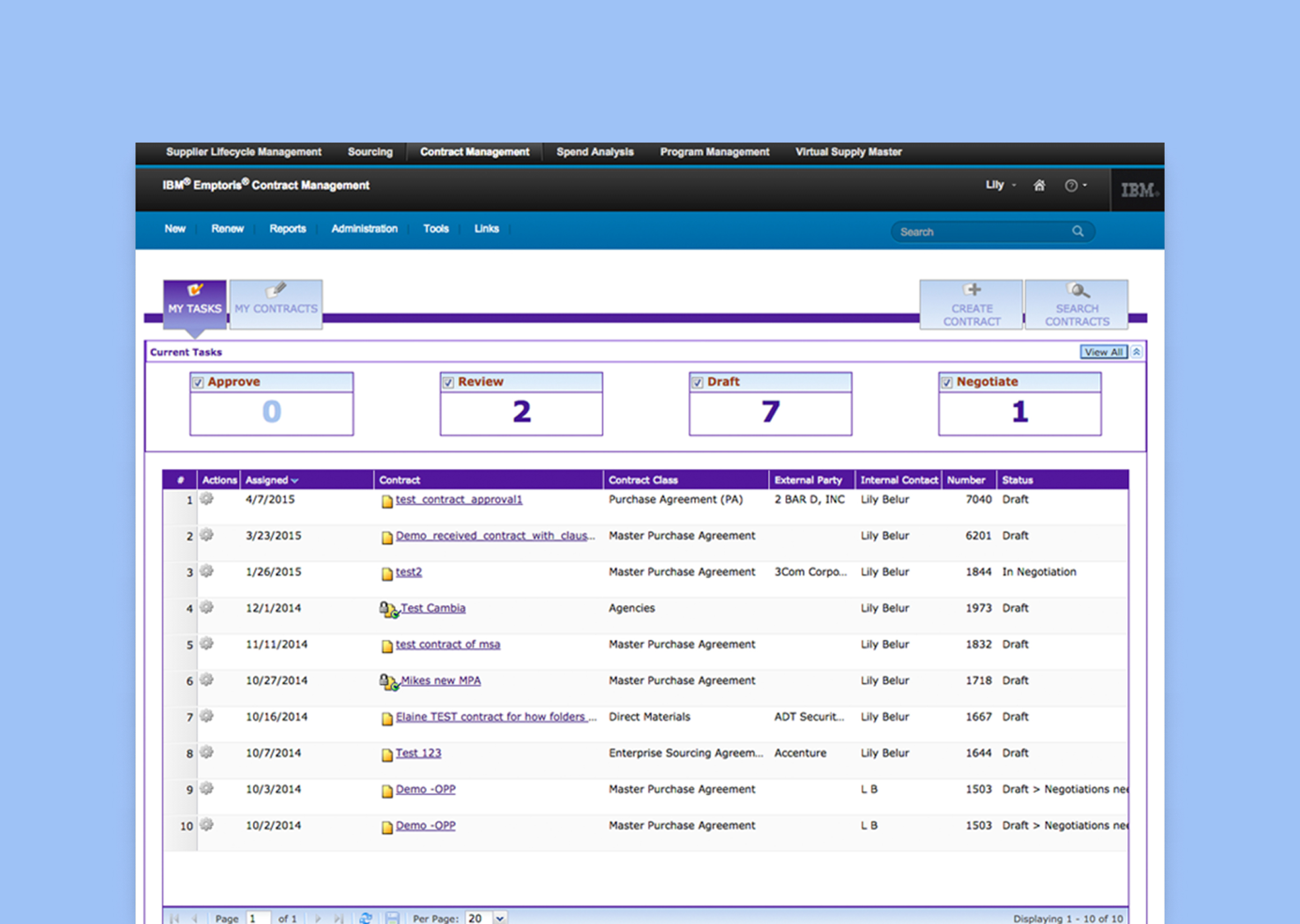
As a UX designer, my role was to create workflows, prototypes, and support the front-end efforts. I worked alongside my design lead, a researcher, another UX designer, and a visual designer. In tandem, our team worked across five other Emptoris products. It included six product managers and 250 developers worldwide.
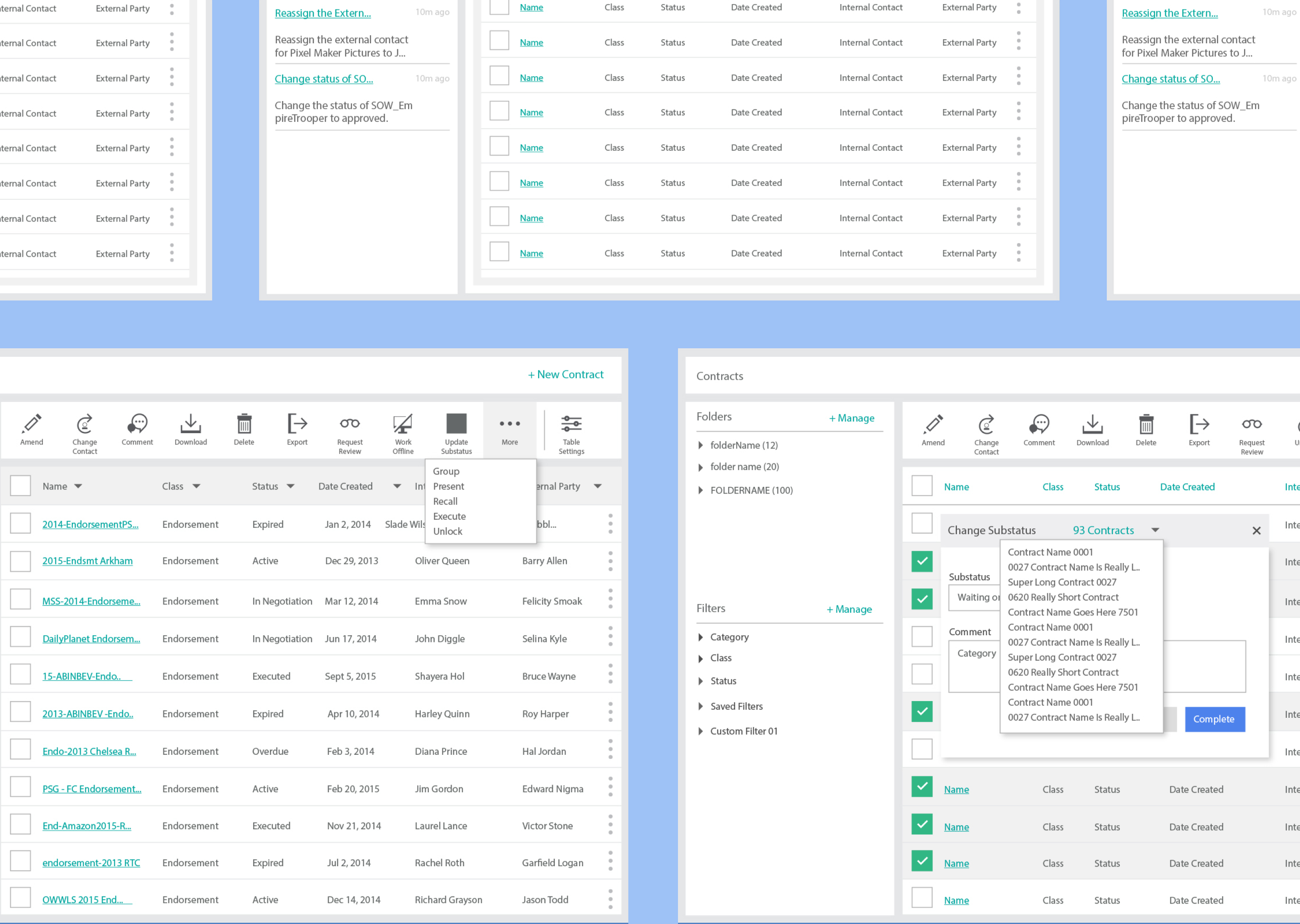
At the start, the product, design, and development team gathered to learn the outcomes. The product managers walked us through the workflow, users, and most prominent problems. The development team showed their technical constraints. Once we had an understanding, we gathered the insights and summarized them into a brief. We presented them to confirm our findings with the team. The goal of the document was to align everyone and track the growth of the product.
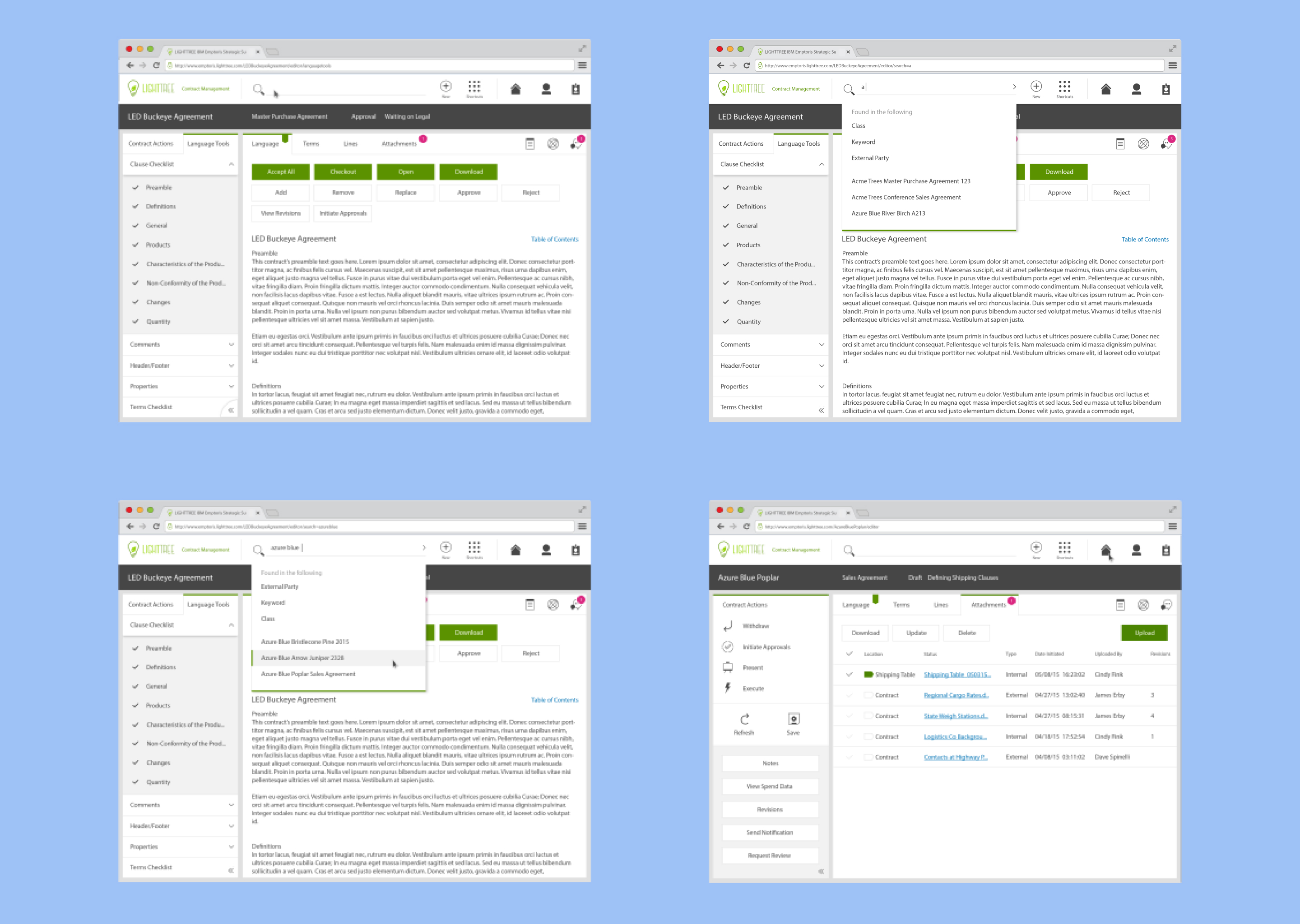
The main challenge was supporting the contract lifecycle to save time and money. By creating, approving, negotiating, and amending contracts with other Emptoris products, users can manage their needs during the supply chain process. I tracked them by measuring several goals. ✶ We will be successful if we reduce the time to find a contract and return to work by 55% ✶ We will be successful if we clarify the experience and bring cohesion to the visual design
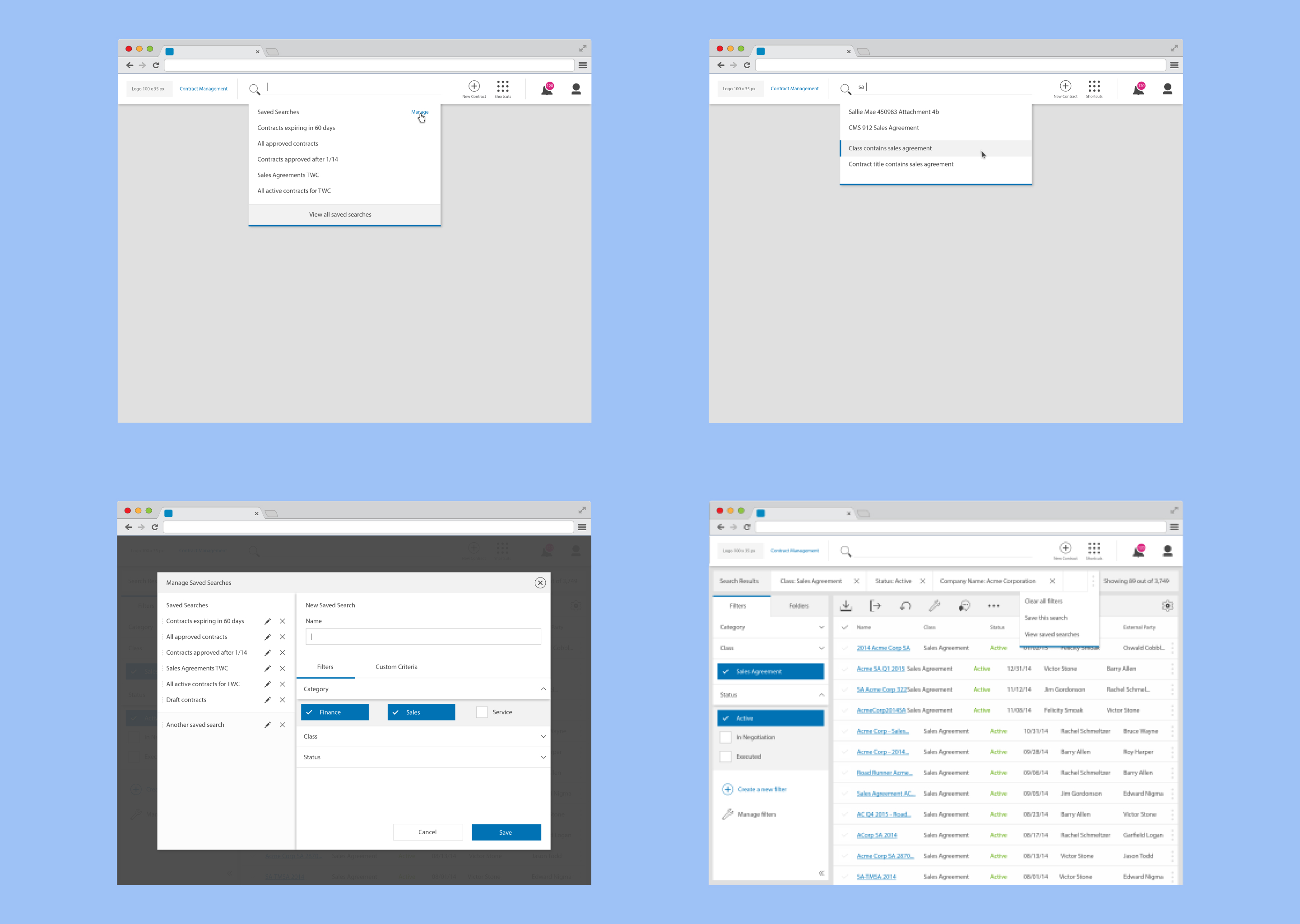
This project marked the most critical redesign in 15 years, and we felt the urge to change everything. To scale the product, the whole team met twice a week to adjust the goals. In my product review, working across several contracts and searching for one is tricky - 52 required filters. For instance, when users initiated a search, Emptoris asked for precise inputs. Because of this problem, users were successful 53% of the time. The homepage was successful, but users needed more information. Like detailed status, last modified, and the contract type to return to work.
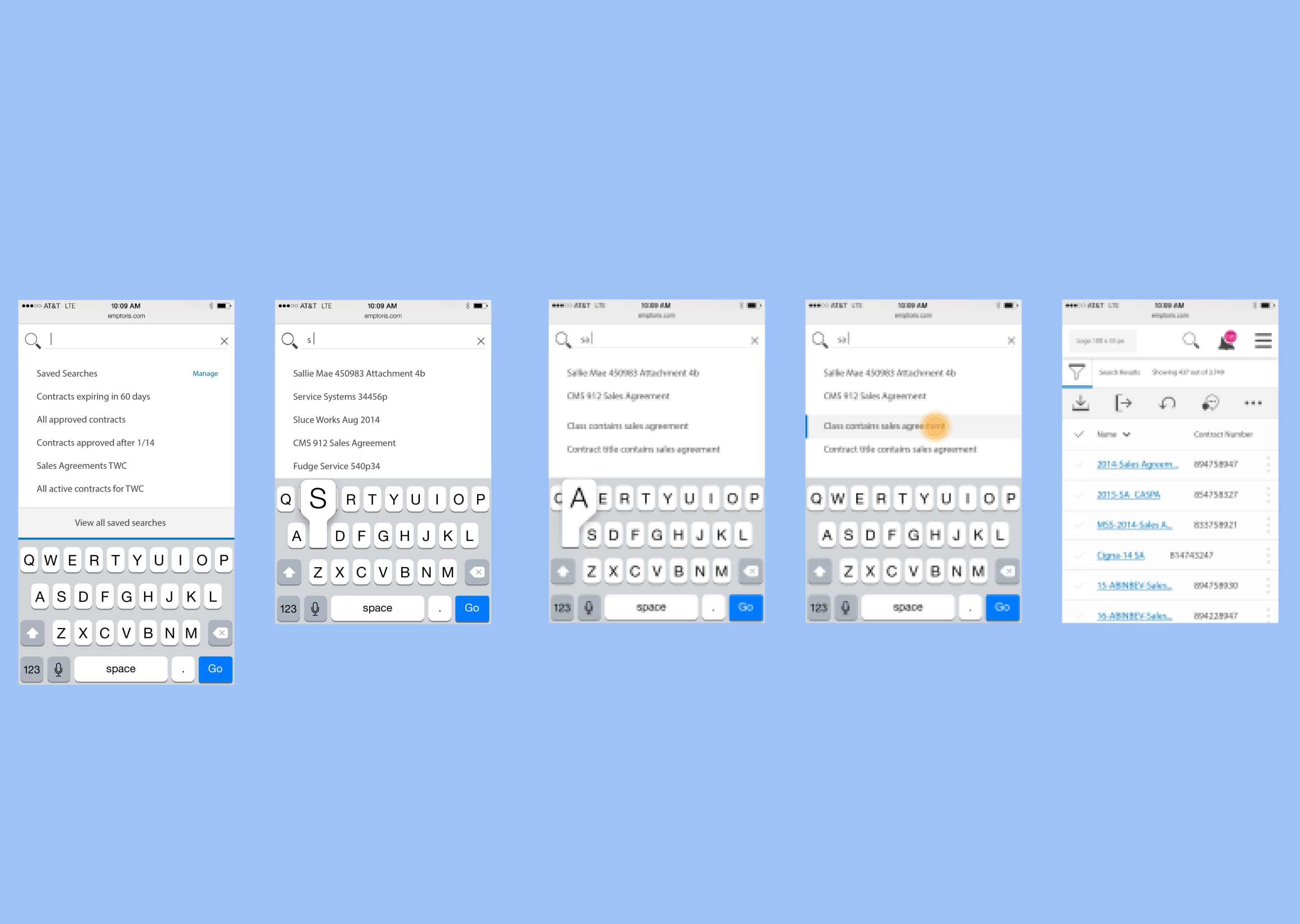
During our ongoing user research, we did a remote design kickoff with the team. We gathered various stakeholders to brainstorm solutions around the problems. I distilled the ideas into two significant experiences, presented them, and ideated. ✶ How might we create a sense of progression across my contracts? ✶ How might we help users find contracts?
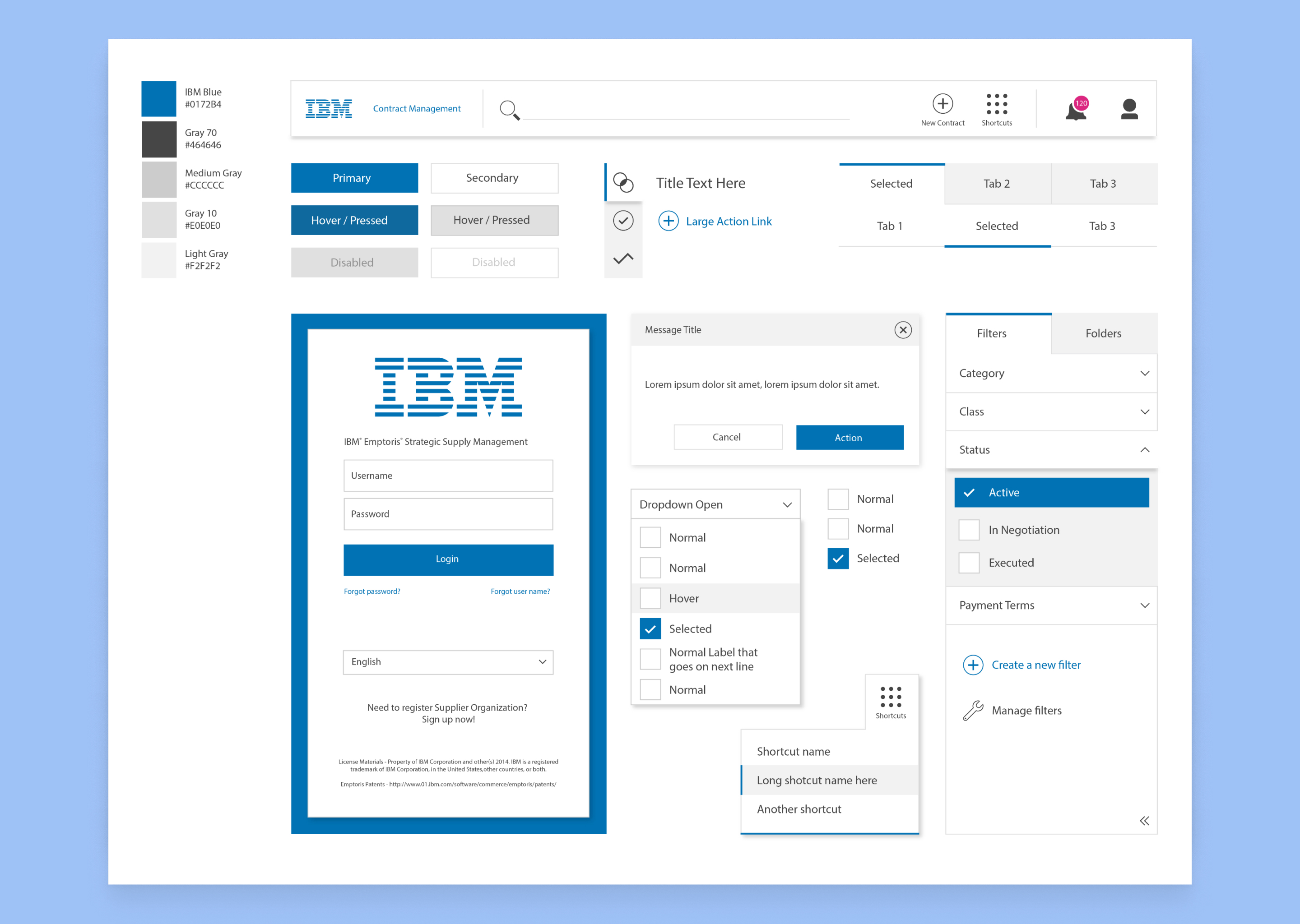
I wanted to design a better experience that would yield better results upfront. I created a search bar and drop-down that displayed saved searches and recent searches. Once initiated, full results and filters would appear to refine any criteria. The homepage needed to provide visibility and work toward a legal agreement. Many users had deadlines for specific tasks but uncertain about the type of action. I set out to help users jump back into their work. With that, I designed an experience that feels fresh and served as an ally to their productivity. One major roadblock I ran into was the number of table columns. Users wanted everything, and I didn't find any patterns that would help us. To scale the feature, I designed a table that supported five columns. Users could change and reorder the columns at will. User tests helped narrow our defaults and the interactions to support the solution. To measure the visibility, time to value, and risk, we created a short story to find the status and search results. We asked our users to find a previous contract, perform a review task, review the clauses, and find another document and filter by its status.
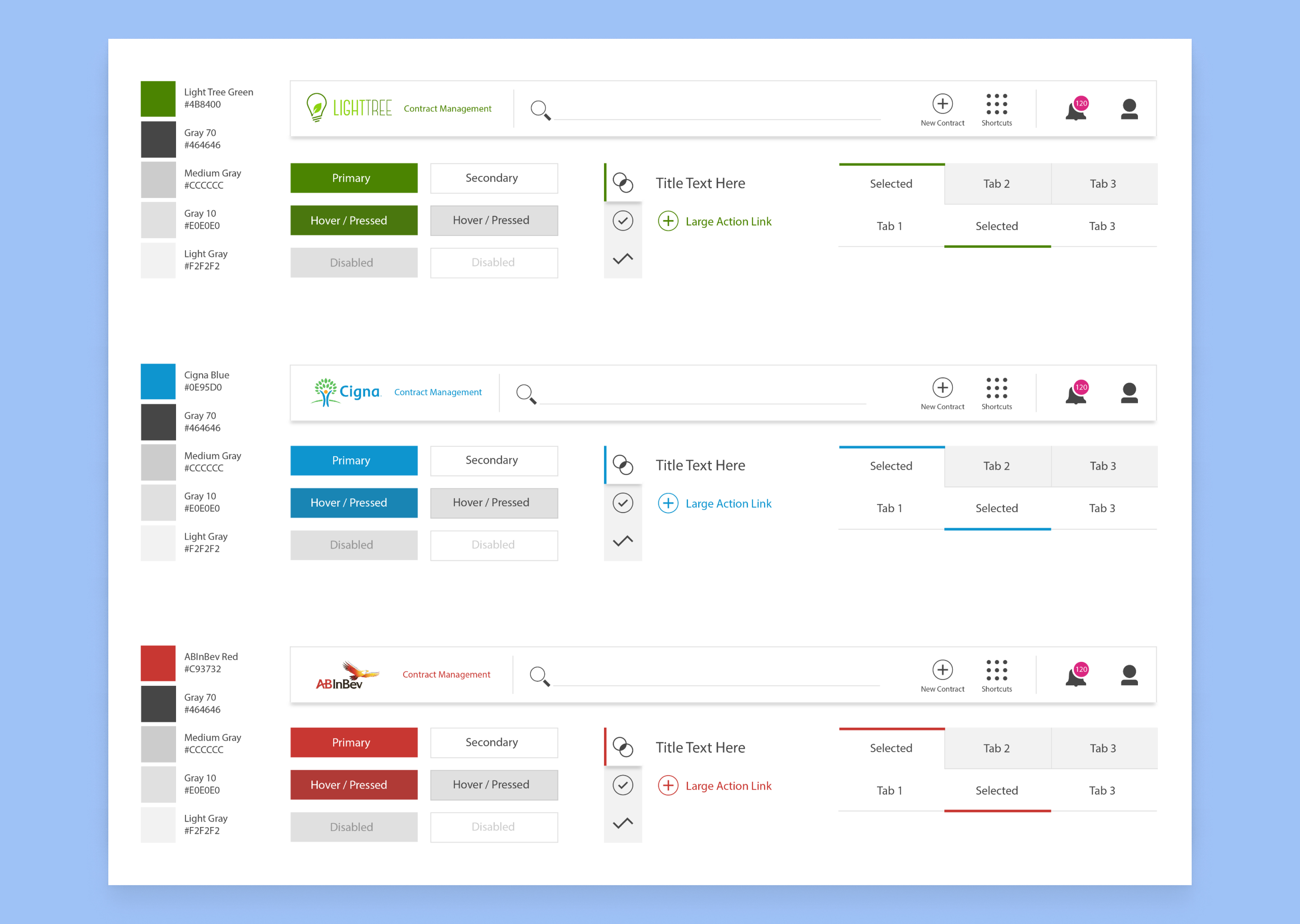
At the end of the test, the average completion rate for the tasks was 78% and rated the new experience; 4 out of 5. The feedback was very positive. Our users loved the experience we were building, and several wanted to be more involved. On the business side, our renewal rate increased by 72%, and several old clients came back. I spent the next months ideating the design and aligning our findings with the product and development teams. I developed more prototypes and tests to identify new problems, and I updated to solve them. Finding their contracts was a breeze, and finishing their tasks became more manageable.
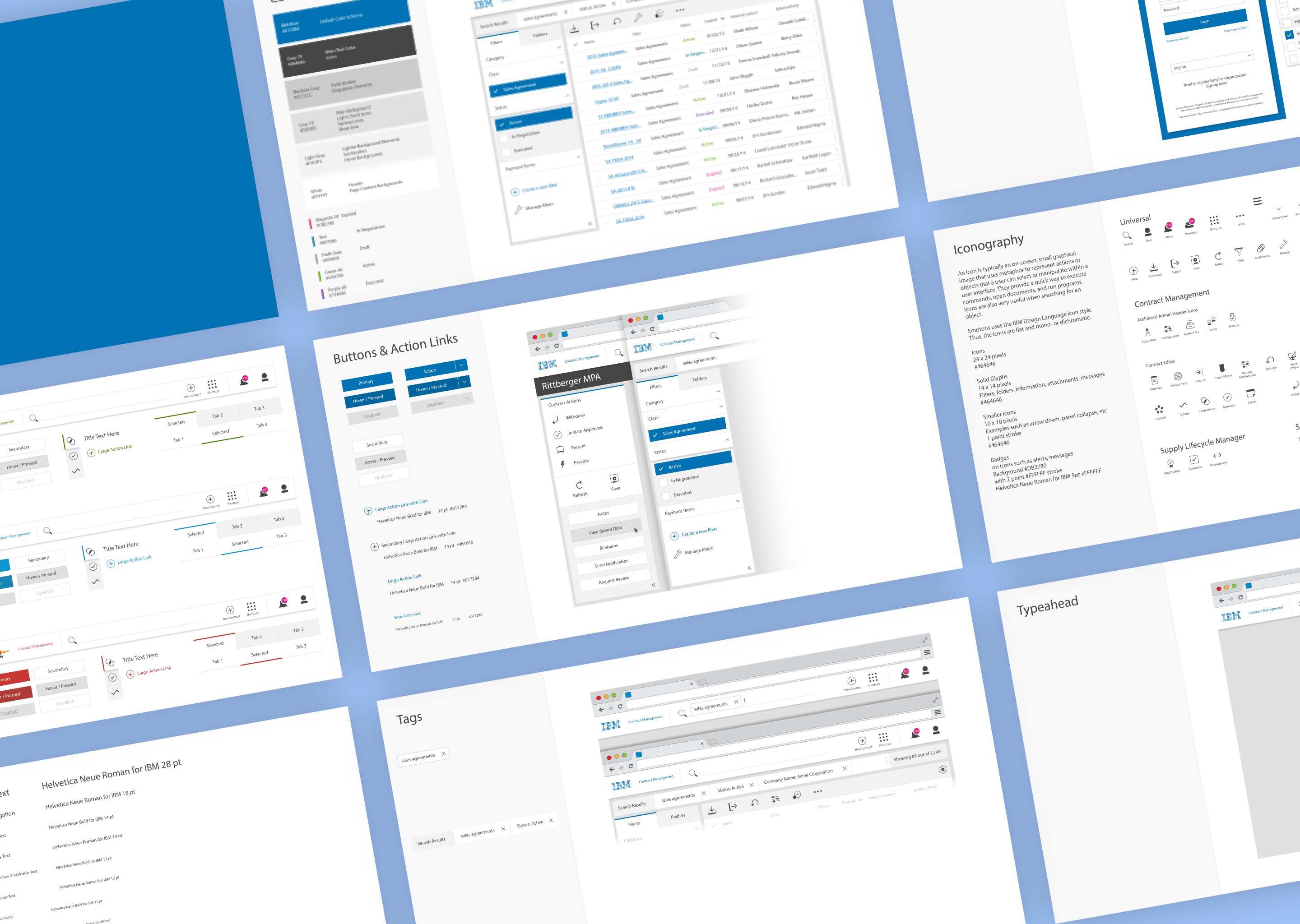
At release, we sat with ten sponsored users and surveyed each to measure our success and failures. Overall the users felt more progressive. They could manage their contracts and tasks and find any document with ease. After the release, the ECM team gathered to discuss the next steps and solve any technical issues. The success yielded more attention and resources, while other products within the suite ask for us to help them.